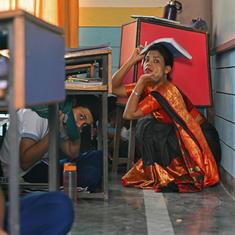In April, the Central Pollution Control Board, the department responsible for keeping pollution across the country within stipulated limits, announced a fresh index to monitor pollution levels in and around industrial clusters. For the first time, the watchdog has included marks for health in the index. This has raised hopes that there will be a more effective effort to eliminate the toxins to which industrial workers and those living around critically polluted areas are exposed.
But public health experts and environmental activists say that the new index is not thorough enough. This, they fear, could make the entire exercise counter-productive.
The Comprehensive Environment Pollution Index was first formulated by the Central Pollution Control Board in 2009 in collaboration with the Indian Institute of Technology, Delhi. It grades industrial areas on a scale of 100 marks. Weightage is distributed among various components such as ambient air and water quality. The higher the cluster scores, the more polluted it is.
Out of the 88 industrial clusters evaluated by the board, 43 scored more than 70 marks and were categorised as "critically polluted". Another 32 clusters scored between 60 and 70 marks and were deemed "seriously polluted". In 2010, the Centre imposed a moratorium on development around the 43 critically polluted areas to ensure pollution levels were brought down to acceptable limits.
Formulating the new index
In 2013, the Central Pollution Control Board began receiving complaints from State Pollution Control Boards on problems they faced with the Comprehensive Environment Pollution Index. In particular, two components of the index were contested as being too complicated: the attempt to measure the impact of pollution on individuals and the ecology, and the attempt to identify potentially pollution-affected populations around the industrial clusters.
The states argued that properly evaluating the impact of pollution on individuals and ecology required massive, expensive studies. These would also be time consuming. The method that was in use – capturing health impacts using secondary sources such as news reports, published scientific literature and studies by NGOs – was deemed inefficient and misleading. What was needed, they said, was a system that could capture health impact in a simpler but efficient manner.
Taking this suggestion up, the Central Pollution Control Board began formulating a revised index in 2015. In the new index released in April this year, the board introduced ten marks out of 100 for health. This went along with 20 marks for the scale of industrial activity, 50 marks for the scale at which the prescribed pollution limits have been exceeded, and 20 marks for compliance with various industrial rules.
The board's notification in April said data pertaining to health of individuals would be collected from three to five major hospitals within a 2-kilometer radius of the polluted sites. Marks would be determined by the increase in number of cases of particular diseases. For example, a 10% increase in asthma, bronchitis, lung cancer and other such respiratory diseases would mean the cluster would be pulled up for air pollution.
Haze over the health check
Shweta Narayan, coordinator of the SIPCOT Community Environmental Monitors in Cuddalore, which is a critically polluted industrial cluster in Tamil Nadu, said that depending solely on data collected at hospitals could be misleading. "In clusters like Ennore in Chennai, most hospitals are run by the industries themselves," she said. "We cannot expect this to be honest and accurate."
There was also lack of clarity on the nature of health records that would be used. The index notification mentions that records of the previous five years would be taken into account. But at the same time, the document states elsewhere that data of "two consecutive" years would be used.
In a letter to the central board last week, 20 public health experts and activists said that the notification was silent on who would analyse the data collected from hospitals and what would be the follow up on such an analysis.
"Analysing health data against pollution levels is tricky because health conditions have multifactorial causes," the letter pointed out. Adding to the difficulty was the lack of public health monitoring infrastructure around many of these industrial areas.
Dr Poornima Prabhakaran, assistant professor at the Public Health Foundation of India, said collecting data from local hospitals will not provide the best picture of what was transpiring on the ground. Instead, there should be comparative analysis of the data from around the industrial cluster with data from hospitals located in non-polluted areas. "By the time the assessment is done, the disease burden on the local population may already be high," she said. Thus, the local hospital might not show much increase in incidence of a disease, making the index counterproductive and helpful to the industry.
A senior pollution board official said though five-year records would be used to ascertain trends, the index marks would be awarded by comparing current year statistics with the previous year.
A circular was sent to all the State Pollution Control Boards in May asking them to reassess the industrial clusters using the revised index, the official added.
An officer at the Tamil Nadu Pollution Control Board, under which fall four critically polluted clusters of Vellore, Cuddalore, Manali and Coimbatore, said the idea was to ensure the assessment was as objective as possible with the subjective elements of the older version, such as ascertaining impact on individuals using secondary data, changed into a comprehensive first-hand assessment.
On analysing the data obtained from the hospitals, the official said the index was a tool to guide assessment of pollution levels and could not be expected to be a comprehensive policy document on every aspect.










